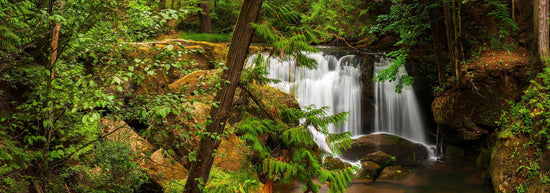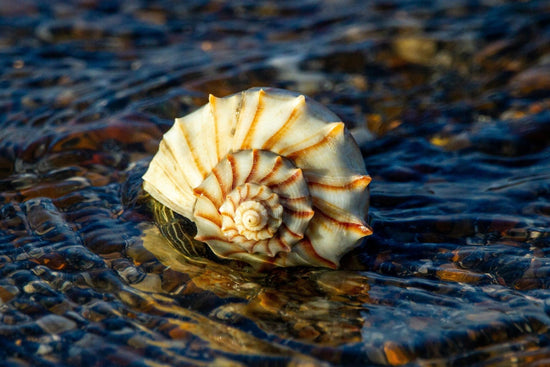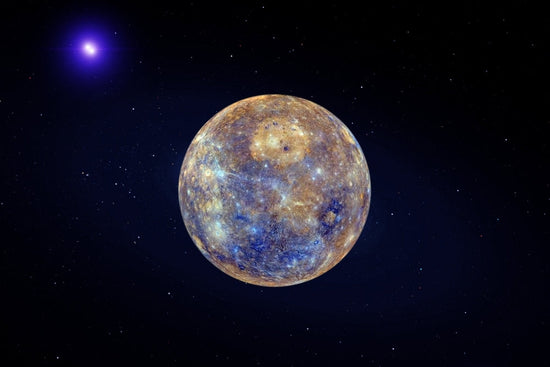World Wetlands Day is celebrated annually on February 2 to raise awareness for the significance of wetland ecosystems in sustaining life on Earth. At Sea Witch Botanicals, we’re committed to protecting our world’s waterways by keeping them free from fragrance oils and other widely used synthetic toxins that can disrupt aquatic ecosystems. In observance of World Wetlands Day this year, we’ve decided to dive into the ecology of wetlands, what makes them so important, why they’re under threat, and what you can do to support the conservation, recovery, and regeneration of these precious ecosystems.
Header image by USGS on Unsplash.
What is a Wetland?
Photo by Transly Translation Agency on Unsplash.
According to National Geographic, a wetland is “an area of land that is either covered by water or saturated with water.” This water can come from local rivers or lakes, coastal seawater, or from the ground in the form of an aquifer or a spring. Depending on seasonal flooding rhythms, these ecosystems are typically only fully submerged in water for part of the year, which is why they’re considered transition zones.
Wetlands are robust with biodiversity. In addition to thousands of animal species, they are populated by hydrophytes, which are plants that only grow in or on water and have unique adaptations to the water-rich, oxygen-poor soil in which they live. Sturdy vegetation like trees can thrive in wetlands that are slower moving or more frequently dry, whereas mosses and grasses reign in wetlands that are more frequently flooded.
The US Forest Service considers swamps, marshes, bogs, and fens as the primary types of wetlands. Swamps are dominated by woody plants while sourcing water from deep below the surface. Marshes are dominated by herbaceous hydrophytes while sourcing most of their water from the surface. Bogs and fens are both considered peatlands. They are dominated by peat, a spongy layer of partially decayed organic matter mostly composed of dead plant remains. Bogs exclusively source water from precipitation, whereas fens source water primarily from the ground.
Wetlands can take myriad other forms as well—like prairie potholes or muskegs in the boreal zone. They exist in every climatic zone and on every continent except Antarctica. Each of these ecosystems comes with its own unique host of inhabitants, geography, chemistry, and climatic patterns.
Here in Washington State, our Department of Ecology estimates that wetlands cover 938,000 acres of land, which equates to about 2% of the state’s total land area. Our Department of Natural Resources has identified the following types of wetlands in our area:
Aquatic beds; bogs; coastal salt marshes; exposed freshwater flats; fens; freshwater tidal wetlands; interdunal wetlands; interior alkaline wetlands; marshes and wet meadows; riparian forests; riparian shrublands; seeps and springs; swamps; vernal pools; and wet rock.
Why Are Wetlands Important?
Breath-takingly beautiful in all of their forms, wetlands are astonishingly biodiverse ecosystems vital to all life on our planet. They function as natural water treatment plants, flood control, water storage, carbon sinks, climate mitigation, wildlife sanctuaries, food sources, and research and recreation areas. While they might not cover much land on Earth, the National Resources Defense Council (NRDC) estimates wetlands perform more than $47 trillion in global services each year.
Water Filtration

Photo by Bryan Hanson on Unsplash.
Wetlands markedly improve water quality through their natural ecological processes. Because they are so well-known for their ability to trap sediments and filter out pollutants, they are often referred to as our planet’s kidneys!
Wetlands are in fact so efficient at purifying water that the Environmental Protection Agency (EPA) estimates the Congaree Bottomland Hardwood Swamp in South Carolina, for example, could equate to a water treatment plant worth $5 million. This is because water slows as it enters a wetland, allowing suspended sediment to settle. Additionally, aquatic plant roots and microorganisms can absorb excess nutrients in the water arriving from “fertilizers, manure, leaking septic tanks, and municipal sewage” (EPA). An overabundance of these nutrients would otherwise set conditions for algae to dominate the area, thereby toppling the balance needed for other life to flourish. This makes wetlands highly beneficial and cost-effective for maintaining healthy water.
Water Storage & Flood Prevention
Photo by Kyle Glenn on Unsplash.
Flooding occurs as a byproduct of heavy precipitation or snowmelt. Vermont’s Department of Environmental Conservation writes that during these “high runoff events,” wetlands act as giant basins that can store substantial quantities of “flood waters that overflow riverbanks” or “surface water that collects in isolated depressions.” Hydrophytic root systems also help to absorb and slow flood waters, easing the rate at which they re-enter their stream channels. In doing so, wetlands can reduce flooding severity and protect against erosion downstream.
Washington State’s Department of Ecology writes: “In watersheds where wetlands have been lost, flood peaks may increase by as much as 80 percent.” Their role in flood prevention is so significant that PBS has noted wetlands stopped $625 million in property damage during Hurricane Sandy in 2012, proving their value to the fundamental safety of human settlements. This is particularly significant as extreme weather events that cause flooding are on the rise due to rapid climate change.
Wetland water retention can also allow for base flow during dry periods, drawing water up from the ground and slowly releasing it over time. This is what can keep a stream of water running during a drought. In other cases, water retention can recharge groundwater, which in turn supplies fresh water to rivers, streams, and humans: We mostly use this water for crop irrigation, but groundwater also provides drinking water to 51% of the total United States population.
Carbon Sequestration

Photo by Jaanus Jagomägi on Unsplash.
Water isn’t the only thing wetlands are good at storing: They’re also extremely efficient carbon sinks, meaning they absorb more carbon than they produce. In fact, a 2018 report by the United Nations Framework Convention on Climate Change (UNFCCC) noted that wetlands “include some of the most carbon-dense ecosystems in our planet, such as salt marshes, sea grass beds, and mangroves.” They also found that peatlands, while covering just 3% of land on Earth, can store twice as much carbon as forests.
NASA writes that carbon dioxide (CO2) is a heat-trapping gas (known as a greenhouse gas) that is emitted into Earth’s atmosphere from “the extraction and burning of fossil fuels (such as coal, oil, and natural gas), from wildfires, and natural processes like volcanic eruptions.” They also report that our atmosphere’s CO2 levels have risen by 50% since the Industrial Revolution, which means “the amount of CO2 is now 150% of its value in 1750.” This is causing our planet to warm much faster than it would be able to naturally.
Given the sudden domineering presence of CO2 in our atmosphere, natural carbon sinks like wetland ecosystems are a critical buffer to rapid climate change and play a vital role in mitigating global temperatures.
Biodiversity

Photo by Lez Smith on Unsplash.
The EPA writes: “Wetlands are among the most productive ecosystems in the world, comparable to rain forests and coral reefs.” Thousands of species of microbes, plants, insects, amphibians, reptiles, birds, fish, and mammals all find refuge in the haven of a wetland. In fact, according to the US Fish & Wildlife Service, wetlands cover only 6% of land on Earth, yet 40% of all plant and animal species live or breed there, including about half of all federally listed endangered species in the US.
Geographical and chemical features in a landscape often produce highly specialized plants and animals who are specifically adapted to life in their home. These are known as endemic species, and a significant number of them populate wetland habitats. Think of the ‘alae ‘ula, or Hawai’ian moorhen; the speckled California tiger salamander; the sweet pitcher plant from bogs in the southeastern US; or the Great Lakes’ manoomin, a wild rice and cultural staple to the Anishinaabeg. Because they do not naturally occur in any habitat other than that in which they evolved, species like these become increasingly vulnerable to extinction as industrialized human developments and rapid climate change encroach upon wetland territory.
Biodiversity is essential for a habitable world. The National Resources Defense Council (NRDC) writes that biodiversity “improves the stability and resilience of an ecosystem” because a complex variety of species and resources increases the likelihood that life in that ecosystem can “withstand stressors like drought, disease, or a changing climate.” Without healthy ecosystems, we cannot secure our supplies of food, clean water, or essential medicines. Biodiverse environments like wetlands quite literally sustain life on Earth.
Why Are Wetlands Under Threat?
Unfortunately, industrial human activities pose grave dangers to wetland habitats. In their 2018 report, the UNFCCC found that our planet’s wetlands are disappearing three times faster than our forests, with 35% having been lost in the last 50 years alone.
Here in Washington State, our Department of Ecology estimates 31%* of our state’s wetlands have been lost since colonization began in the 1780’s, going from 1.35 million acres of wetland habitat to 938,000 acres now.
From developing the land for commercial use to introducing non-native species, this loss in wetland habitat is our doing. The EPA writes that we degrade wetlands by “changing water quality, quantity, and flow rates; increasing pollutant inputs; and changing species composition as a result of disturbance and the introduction of nonnative species.”
It is also important to note that wetlands are increasingly susceptible to the effects of rapid climate change, such as greater heat, more extreme weather, and rising sea levels. As previously mentioned, global temperatures have escalated alongside industrialization at too quick of a pace for evolution to keep up. Because of this, some wetlands risk desiccation, while others risk becoming open water.
*Another source from the department estimates 33-50% of wetlands have been lost in Washington, “with some metropolitan areas in Puget Sound losing over 90 percent of their wetlands.”
Hydrologic Alterations
Photo by John Gibbons on Unsplash.
The hydrology, or movement and distribution of water, of a wetland area is a key part of its functionality. When altered, soil chemistry and surrounding wildlife communities may be severely impacted, or in some cases, destroyed altogether. This occurs as humans develop land with pipelines, artificial channels, or dams; some development projects even require wetlands to be filled, ultimately demolishing the ecosystem for industrial use; others may attempt to convert a wetland from one type to another, which can completely alter biodiversity.
The EPA lists the following human activities as disruptive to wetland hydrology:
- Deposition of fill material for development
- Drainage for development, farming, and mosquito control
- Dredging and stream channelization for navigation, development, and flood control
- Diking and damming to form ponds and lakes
- Diversion of flow to or from wetlands
- Addition of impenetrable surfaces in the watershed, increasing water and pollutant runoff into wetlands
Pollution

Photo by Easton Mok on Unsplash.
While wetlands certainly have a strong capacity for absorbing excess pollutants in the water, pollution has become so pervasive in these ecosystems that even their limits have been reached. Per the EPA, the primary wetland pollutants are sediment, fertilizer, human sewage, animal waste, road salts, pesticides, heavy metals, and selenium, an element likely present due to coal mining. These pollutants, toxic to many wildlife species in high quantities, can accumulate in wetland sediments or food webs, endangering the environment’s chemistry and biodiversity alike.
The EPA goes on to identify the following as sources for these pollutants:
- Runoff from urban, agricultural, silvicultural, and mining areas
- Air pollution from transportation, factories, and power plants
- Toxic leakage from landfills and dumps
- Boats releasing pollutants around marinas
Vegetation & Invasive Species

Photo by Shannon Kunkle on Unsplash depicting the invasive purple loosestrife.
Hydrologic alterations and pollution in wetlands already create the conditions for wetland plants to suffer. However, these are not the only risks they face. The EPA states that vegetation in wetlands can additionally degrade as a result of domestic animal grazing; removal of natural vegetation, particularly for peat mining; or the introduction of nonnative species.
Nonnative species that thrive in new environments are called invasive species because they adapt quickly enough to out-compete native species for food or other resources. This often happens because the nonnative species doesn’t have any natural predators or competition in the area where they’re introduced, granting them advantage over the delicately balanced ecosystem in place. Given enough pressure, native species may be pushed to leave or die out. Even worse, the invasive species that reigns in its place is likely unable to support the same host of life.
Here in Washington State, our Department of Natural Resources has identified a number of invasive species living in our wetland areas. One such plant is spartina, an “aggressive non-native saltmarsh grass” that overtakes native vegetation and “ravages shellfish, waterfowl, and salmonid feeding and rearing along the Pacific coast,” thereby ruining some coastal economies.
They also list knotweed, reed canary grass, purple loosestrife, and policeman’s helmet as noxious weeds that “choke rivers and streams.” These invasive plants reduce streamflow, causing silt and debris to accumulate and altering the hydrology of the areas. They also “[colonize] salmon-spawning gravel streambeds,” leaving little room for salmon to safely lay their eggs. This is especially alarming as salmon are a keystone species that provide essential nutrients to every ecosystem they travel through. Fewer salmon equates to greater ecological adversity that can be felt almost everywhere.
What You Can Do For Wetlands

Photo by Jeremy Kwok on Unsplash.
While the current state of our global wetlands can feel horrifyingly bleak, there is still hope to be had and actions we all can take to protect these marvelous ecosystems and help them to regenerate. Remember: You don’t have to be a perfect environmentalist in order to make a difference! Every action you take has an impact. Positive climate action isn’t about doing everything right—it’s about learning how to make conscious choices with the good of people and planet in mind—and then making them!
It is also important to bear in mind that having a harmful or one-sided relationship with nature is not inherently human. Indigenous communities have lived in balance with their local ecosystems for thousands of years while intentionally cultivating the land for personal use. Indigenous wisdom teaches the value of building relationships with nature that are based in reciprocity, rather than power or exploitation. If we center and uplift Indigenous voices in the climate movement, we have a better chance at managing the effects of rapid climate change and kindling a collective relationship with the Earth that is based in compassion, respect, and equitable exchange.
In combination with suggestions from the National Oceanic and Atmospheric Administration (NOAA), we can recommend taking the following actions to help restore our planet’s wetlands:
Photo by Karthik M. on Unsplash
All in all, wetlands are incredibly rich, diverse, complex ecosystems that are some of our greatest allies in the face of the unfolding climate crisis. Right now, they need our help. Let us commit together to raising awareness about the importance of wetlands and do our part to protect our waterways, revitalize wetland ecosystems, and appreciate the wildlife on our planet that still thrives.









